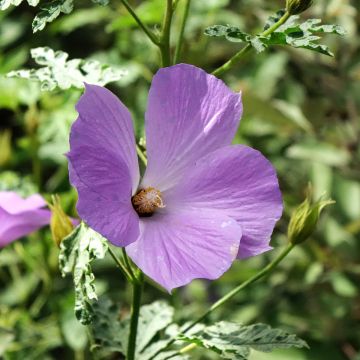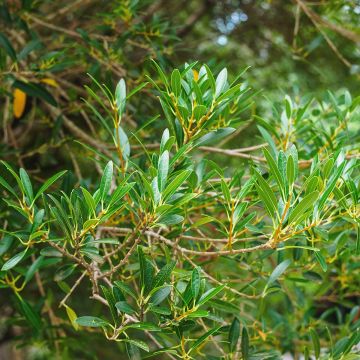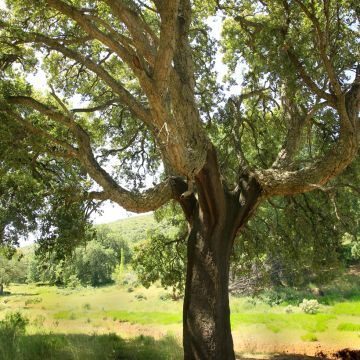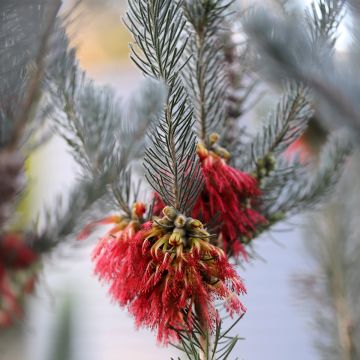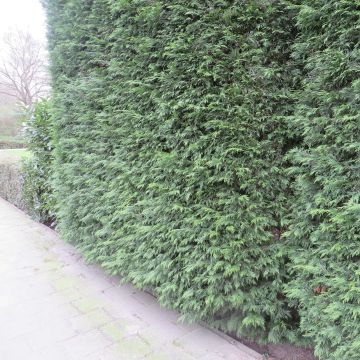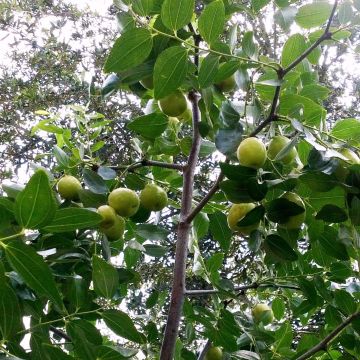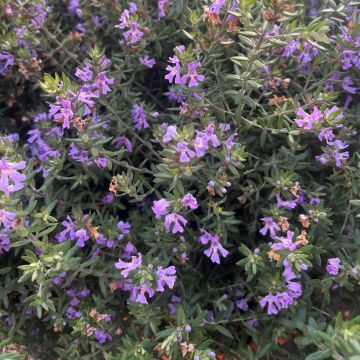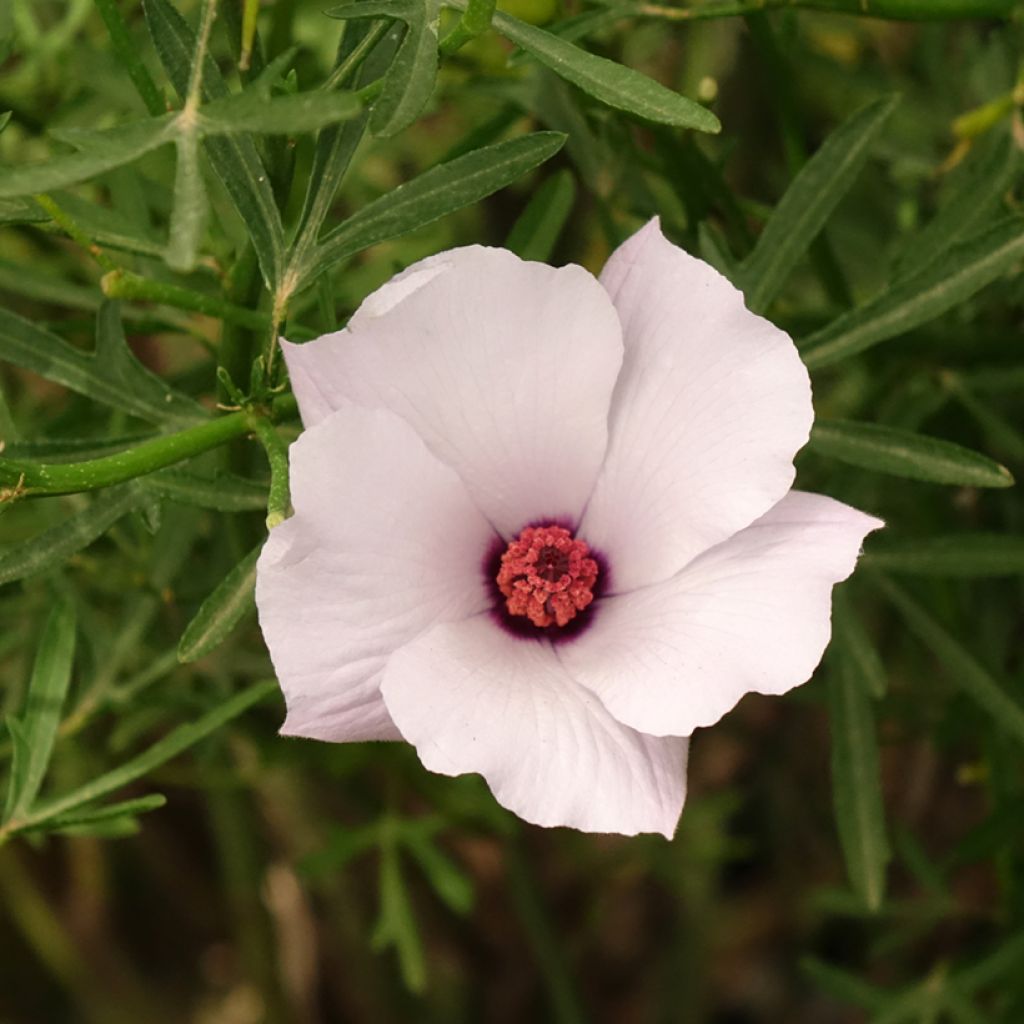

Alyogyne cuneiformis
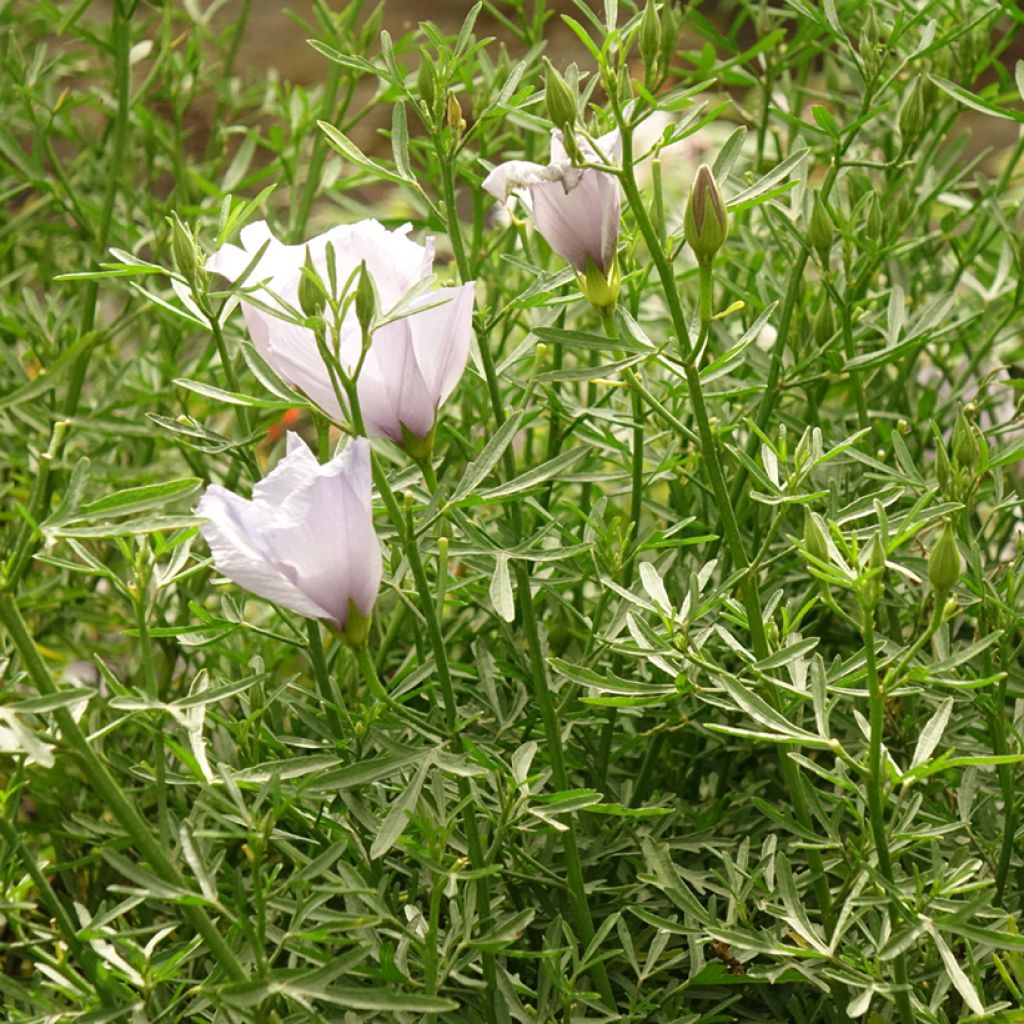

Alyogyne cuneiformis
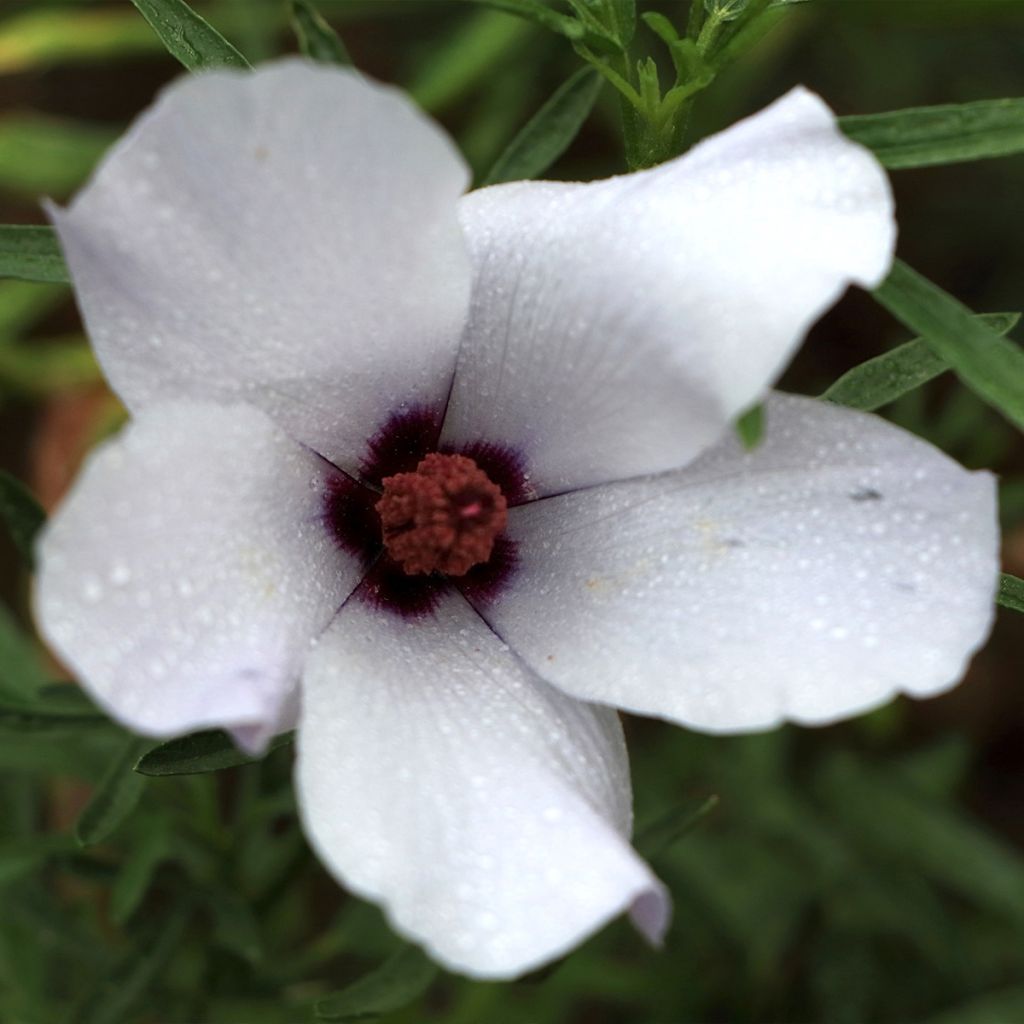

Alyogyne cuneiformis
Alyogyne cuneiformis
Alyogyne cuneiformis
Western Hibiscus, Cut-leaf Hibiscus, Dwarf Hibiscus, Coastal Hibiscus
Received a plant with many flower buds that continued to develop and renew throughout the summer. Planted at my second home on the Île de Ré, I wonder how it will have fared through the winter?
Dominique, 05/02/2024
Special offer!
Receive a €20 voucher for any order over €90 (excluding delivery costs, credit notes, and plastic-free options)!
1- Add your favorite plants to your cart.
2- Once you have reached €90, confirm your order (you can even choose the delivery date!).
3- As soon as your order is shipped, you will receive an email containing your voucher code, valid for 3 months (90 days).
Your voucher is unique and can only be used once, for any order with a minimum value of €20, excluding delivery costs.
Can be combined with other current offers, non-divisible and non-refundable.
Why not try an alternative variety in stock?
View all →This plant carries a 12 months recovery warranty
More information
We guarantee the quality of our plants for a full growing cycle, and will replace at our expense any plant that fails to recover under normal climatic and planting conditions.

Would this plant suit my garden?
Set up your Plantfit profile →
Description
Alyogyne cuneiformis, so named for its wedge-shaped leaves, is part of a group of Hibiscus-related plants native to the Australian coast. This species quickly forms an upright bush, recognisable by its leaves divided into 3 cuneiform segments, which widen from the base to the top. Its flowering is delicate, with corollas of almost white iridescent petals that partially open to reveal a dark red heart. The flowers are ephemeral and renew almost daily during the flowering period. Alyogyne cuneiformis is resistant to drought once established. Gardeners in cooler regions might grow this beautiful exotic plant in a pot on the terrace or balcony, to be stored away in winter.
Alyogyne cuneiformis, formerly named Cienfuegosia cuneiformis or Fugosia cuneiformis, belongs to the Malvaceae family, like shrub mallow and hibiscus. It is native to the western coasts of Australia, where the climate is very dry, hot, and windy in summer, mild, windy, and more temperate in winter. It grows in coastal areas, often in sandy soils. Quite adaptable, this species tolerates clay, limestone and sand, but requires a very well-draining soil where water does not stagnate, both in winter and summer. It can withstand short frosts of about -5°C (23 °F) if its soil is dry in winter. In moist soil, it will perish at -1°C (30.2 °F). Its growth is shrub-like and its foliage is evergreen.
In nature, Alyogyne cuneiformis can reach a height of 3m (10 ft). In Europe, its dimensions rarely exceed 1.50m (5 ft) in height and 1m (3 in 4 ft) in width, when planted in the ground. It has a very fast growth rate and an upright but flexible habit. Flowering occurs from April to June, from June to September, or from September to November depending on the region. Each flower, about 10-12cm (4-5 in) wide, is composed of 5 petals that are very pale mauve-pink when they open, overlapping and arranged in cups that never fully open. The centre of the corolla, dark red, is occupied by many short stamens with yellow anthers, surrounding 5 that are longer and partially fused. Like all plants in the Malvaceae family, the flowers only live for a day or two, but they renew continuously for nearly 4 months. The flowers, pollinated by insects, give way to fruits in 5-lobed capsules containing seeds. The foliage consists of thick, slightly rough leaves, divided into 3 dark green lobes. To maintain a compact shape, we recommend pruning in March, and lightly throughout the growing season. This Alyogyne is a short-lived plant, lasting around 8 years.
Alyogyne cuneiformis is a plant for dry soil that needs protection from frost. To preserve it, it is essential to plant it in a site sheltered from cold winds, on a somewhat arid slope, in a large rock garden or raised bed enriched with gravel, and to protect its base from water in winter. It can be combined with other frost-tolerant plants for dry soil such as hybrid lavenders, Westringia, rock roses, and blue agapanthus to create superb combinations. Growing it in a large pot presents no difficulties and allows for its protection during winter in a bright, unheated room.
Report an error about the product description
Alyogyne cuneiformis in pictures


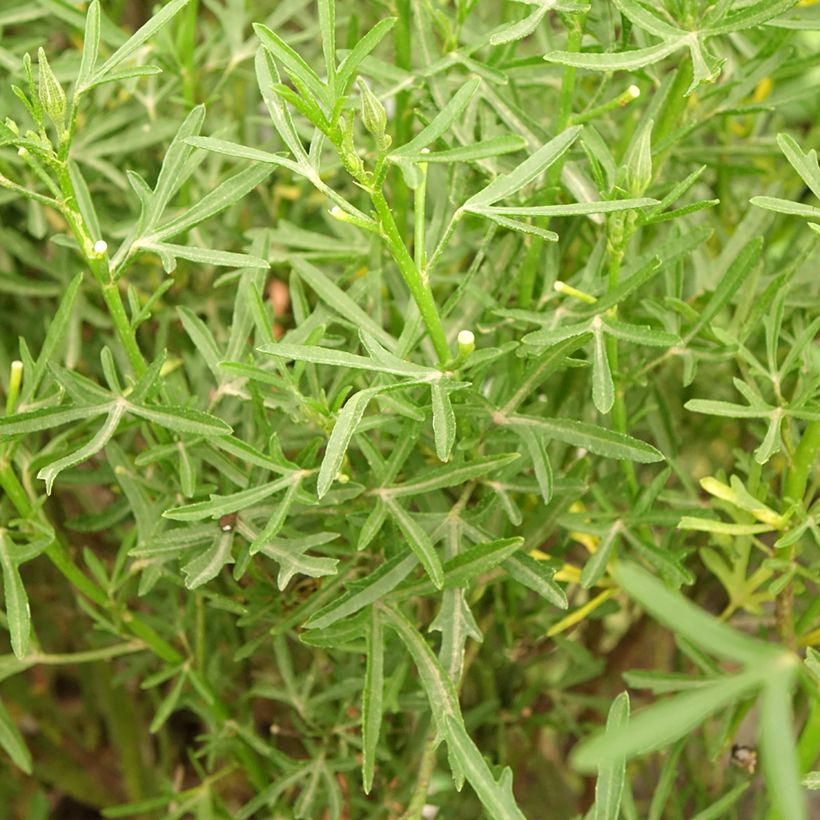

Flowering
Foliage
Plant habit
Botanical data
Alyogyne
cuneiformis
Malvaceae
Western Hibiscus, Cut-leaf Hibiscus, Dwarf Hibiscus, Coastal Hibiscus
Hibiscus cuneiformis, Cienfuegosia cuneiformis, Fugosia cuneiformis
Australia
Other Alyogyne
View all →Planting and care
Alyogyne cuneiformis is a plant that thrives in hot and dry climates; once established it can withstand summer drought. It tolerates sea spray very well and is particularly suited to warm coastal gardens. This bush is not frost-tolerant and dislikes wet soil in winter, which significantly reduces its hardiness: in a very dry soil in winter, it can withstand brief frosts of around -5°C (23 °F). In moist soil, it will perish below -1°C (30.2 °F). Therefore, it is best to plant it in spring, in soil enriched with gravel, to allow it some time to establish and strengthen before winter. Choose a sunny and sheltered site to ensure good flowering and to shield it from winter weather. The soil type is not important, whether slightly acidic, neutral, limestone, clayey, loamy, stony or sandy, as long as it is well-drained. Prune at the beginning of the growth period if necessary, and during the growing season to promote good branching of the plant. Fertiliser application is not necessary for this plant, which prefers rather poor and leached soils.
Pot cultivation: choose a pot with a minimum capacity of 20 litres and ensure it has drainage holes at the bottom. Place a layer of gravel or broken pieces of terracotta at the bottom of the pot to improve drainage. Prepare a mixture of garden soil and compost, adding some gravel. Regularly water your plant to support flowering, but avoid overwatering. Like many Australian plants, Alyogyne seems to dislike soils rich in phosphorus. Use a fertiliser with a low phosphorus content (N, P, K), preferably mineral-based rather than organic.
Planting period
Intended location
Care
Planting & care advice
-
, onOrder confirmed
Reply from on Promesse de fleurs
Similar products
Haven't found what you were looking for?
Hardiness is the lowest winter temperature a plant can endure without suffering serious damage or even dying. However, hardiness is affected by location (a sheltered area, such as a patio), protection (winter cover) and soil type (hardiness is improved by well-drained soil).

Photo Sharing Terms & Conditions
In order to encourage gardeners to interact and share their experiences, Promesse de fleurs offers various media enabling content to be uploaded onto its Site - in particular via the ‘Photo sharing’ module.
The User agrees to refrain from:
- Posting any content that is illegal, prejudicial, insulting, racist, inciteful to hatred, revisionist, contrary to public decency, that infringes on privacy or on the privacy rights of third parties, in particular the publicity rights of persons and goods, intellectual property rights, or the right to privacy.
- Submitting content on behalf of a third party;
- Impersonate the identity of a third party and/or publish any personal information about a third party;
In general, the User undertakes to refrain from any unethical behaviour.
All Content (in particular text, comments, files, images, photos, videos, creative works, etc.), which may be subject to property or intellectual property rights, image or other private rights, shall remain the property of the User, subject to the limited rights granted by the terms of the licence granted by Promesse de fleurs as stated below. Users are at liberty to publish or not to publish such Content on the Site, notably via the ‘Photo Sharing’ facility, and accept that this Content shall be made public and freely accessible, notably on the Internet.
Users further acknowledge, undertake to have ,and guarantee that they hold all necessary rights and permissions to publish such material on the Site, in particular with regard to the legislation in force pertaining to any privacy, property, intellectual property, image, or contractual rights, or rights of any other nature. By publishing such Content on the Site, Users acknowledge accepting full liability as publishers of the Content within the meaning of the law, and grant Promesse de fleurs, free of charge, an inclusive, worldwide licence for the said Content for the entire duration of its publication, including all reproduction, representation, up/downloading, displaying, performing, transmission, and storage rights.
Users also grant permission for their name to be linked to the Content and accept that this link may not always be made available.
By engaging in posting material, Users consent to their Content becoming automatically accessible on the Internet, in particular on other sites and/or blogs and/or web pages of the Promesse de fleurs site, including in particular social pages and the Promesse de fleurs catalogue.
Users may secure the removal of entrusted content free of charge by issuing a simple request via our contact form.
The flowering period indicated on our website applies to countries and regions located in USDA zone 8 (France, the United Kingdom, Ireland, the Netherlands, etc.)
It will vary according to where you live:
- In zones 9 to 10 (Italy, Spain, Greece, etc.), flowering will occur about 2 to 4 weeks earlier.
- In zones 6 to 7 (Germany, Poland, Slovenia, and lower mountainous regions), flowering will be delayed by 2 to 3 weeks.
- In zone 5 (Central Europe, Scandinavia), blooming will be delayed by 3 to 5 weeks.
In temperate climates, pruning of spring-flowering shrubs (forsythia, spireas, etc.) should be done just after flowering.
Pruning of summer-flowering shrubs (Indian Lilac, Perovskia, etc.) can be done in winter or spring.
In cold regions as well as with frost-sensitive plants, avoid pruning too early when severe frosts may still occur.
The planting period indicated on our website applies to countries and regions located in USDA zone 8 (France, United Kingdom, Ireland, Netherlands).
It will vary according to where you live:
- In Mediterranean zones (Marseille, Madrid, Milan, etc.), autumn and winter are the best planting periods.
- In continental zones (Strasbourg, Munich, Vienna, etc.), delay planting by 2 to 3 weeks in spring and bring it forward by 2 to 4 weeks in autumn.
- In mountainous regions (the Alps, Pyrenees, Carpathians, etc.), it is best to plant in late spring (May-June) or late summer (August-September).
The harvesting period indicated on our website applies to countries and regions in USDA zone 8 (France, England, Ireland, the Netherlands).
In colder areas (Scandinavia, Poland, Austria...) fruit and vegetable harvests are likely to be delayed by 3-4 weeks.
In warmer areas (Italy, Spain, Greece, etc.), harvesting will probably take place earlier, depending on weather conditions.
The sowing periods indicated on our website apply to countries and regions within USDA Zone 8 (France, UK, Ireland, Netherlands).
In colder areas (Scandinavia, Poland, Austria...), delay any outdoor sowing by 3-4 weeks, or sow under glass.
In warmer climes (Italy, Spain, Greece, etc.), bring outdoor sowing forward by a few weeks.






























